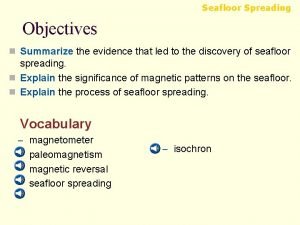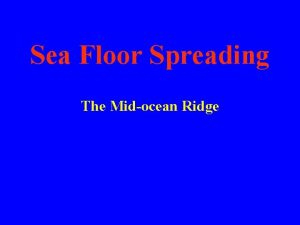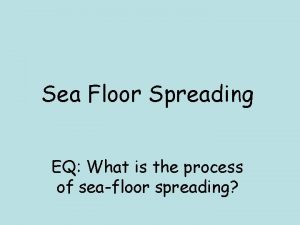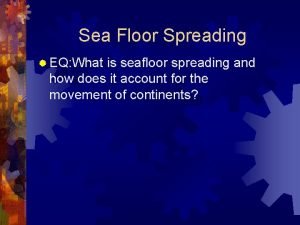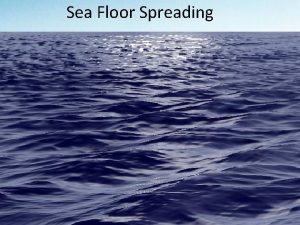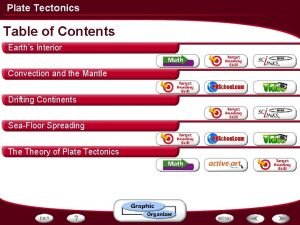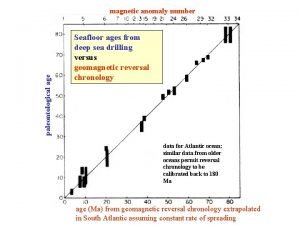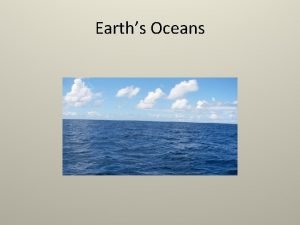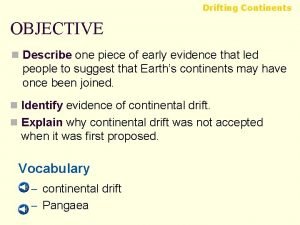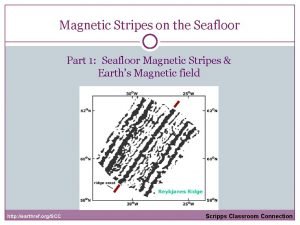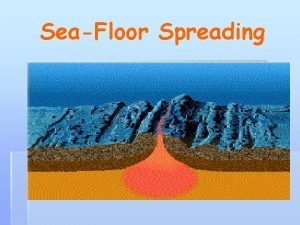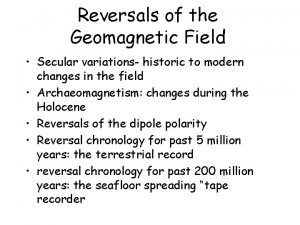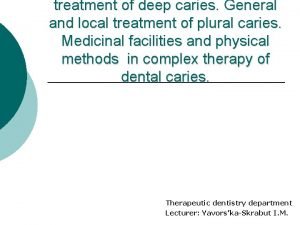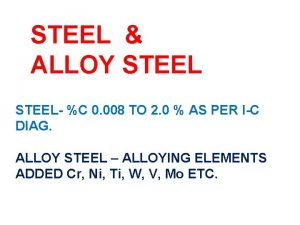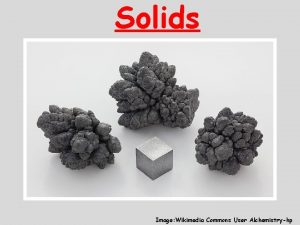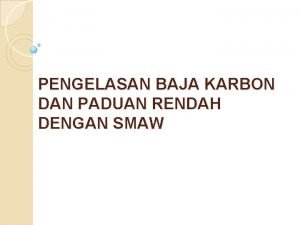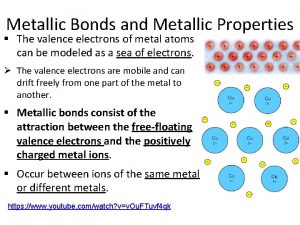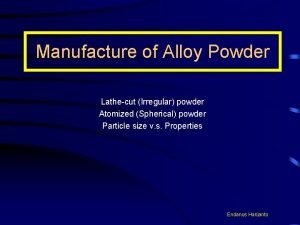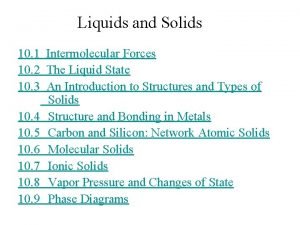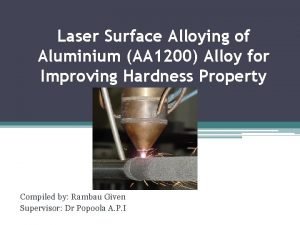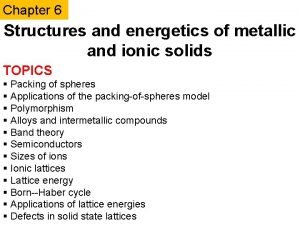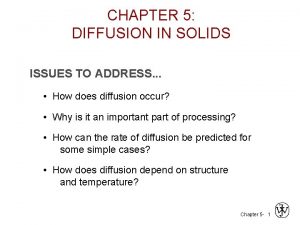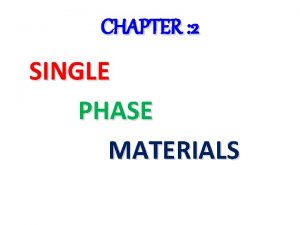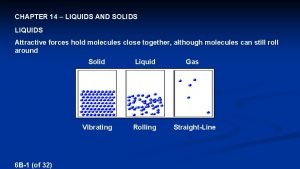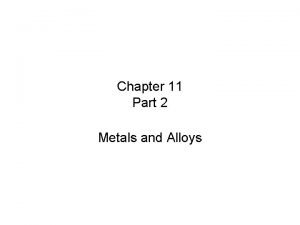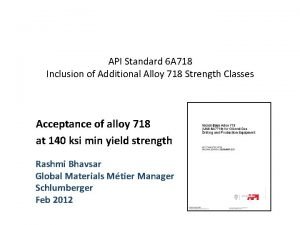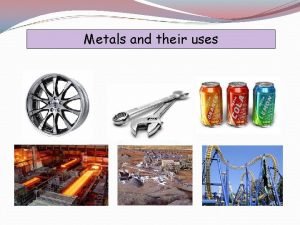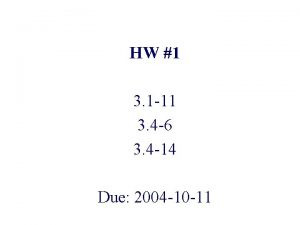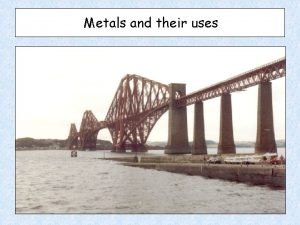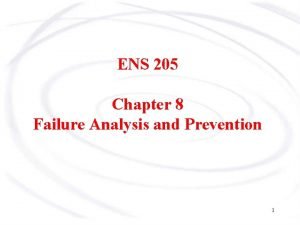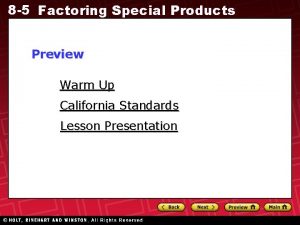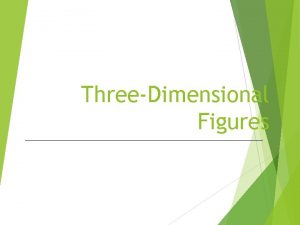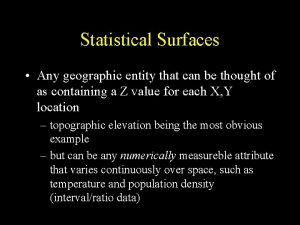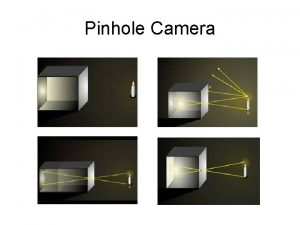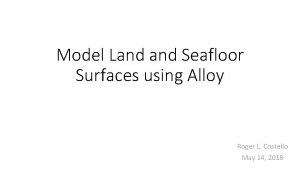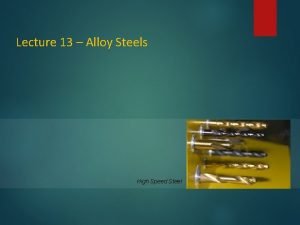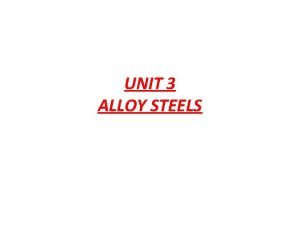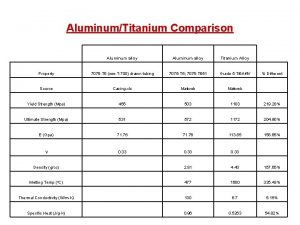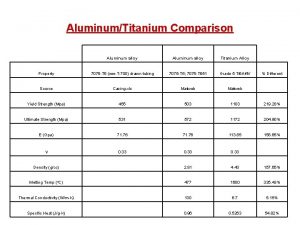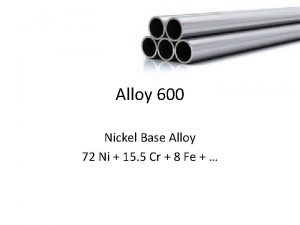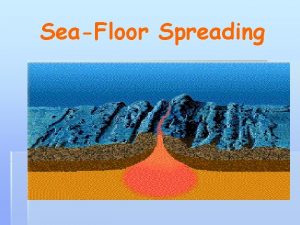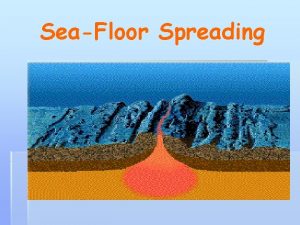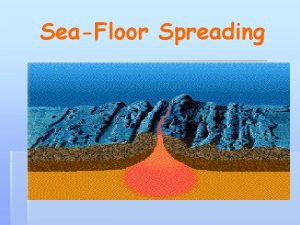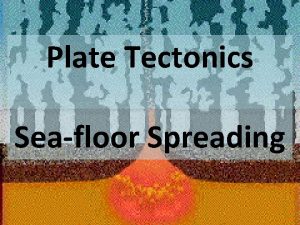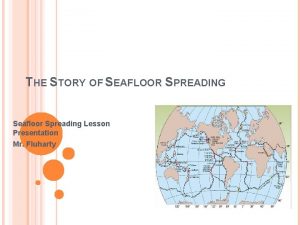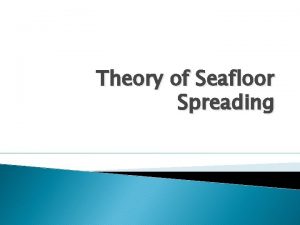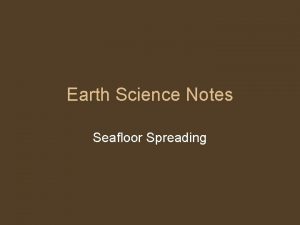Model Land Seafloor Surfaces using Alloy Part 2































![What are the Nodes in mesh m? dom[m. triangles. edges] are the Nodes in What are the Nodes in mesh m? dom[m. triangles. edges] are the Nodes in](https://slidetodoc.com/presentation_image/01d98841bd1930865750f25679cd3140/image-32.jpg)



























![run {some m: Mesh | solve[m, to. Seq[first, next]]} for 6 but 8 Int, run {some m: Mesh | solve[m, to. Seq[first, next]]} for 6 but 8 Int,](https://slidetodoc.com/presentation_image/01d98841bd1930865750f25679cd3140/image-60.jpg)


- Slides: 62

Model Land Seafloor Surfaces using Alloy (Part 2) Roger L. Costello May 28, 2018

The material in these slides come from this paper http: //www 4. ncsu. edu/~jwb/papers/baugh-scp-2018. pdf

Build on top of the model • The previous slide-deck described an Alloy model of meshes composed of triangles and the triangles were constrained to fit together edge-to-edge. That model can be used with any problem that represents things, under the hood, as triangles. • We now create a model of coastal regions, with a focus on how areas become wet and dry. This model builds on top of the (abstract) mesh/triangle model, adding attributes to represent the physical properties of coastal water.

Model coastal regions, with a focus on how areas become wet and dry Model meshes composed of triangles which are constrained to fit together edge-to-edge

module wetdry open mesh module mesh

Terminology • In the abstract model we used these terms: triangle and vertex. • In the coastal region model we use these terms: element and node. Abstract model triangle vertex Coastal region model element node

Element is a triangle, but with additional, coastal region properties mesh module sig Triangle { edges: Vertex -> Vertex } extends wetdry module sig Element extends Triangle { // Properties specific to modeling the wet/dry // characteristics of a coastal region }

Node is a vertex, but with additional, coastal region properties mesh module sig Vertex {} extends wetdry module sig Node extends Vertex { // Properties specific to modeling the wet/dry // characteristics of a coastal region }

Is the Element wet? mesh module sig Triangle { edges: Vertex -> Vertex } extends wetdry module sig Element extends Triangle { wet: Bool one -> State … } Element e is wet in state s: e. wet. s = True Element e is dry in state s: e. wet. s = False

Bool is defined in util/boolean module wetdry open mesh open util/boolean sig Element extends Triangle { wet: Bool one -> State … }

We want dynamic Elements: their values go through a series of state changes mesh module sig Triangle { edges: Vertex -> Vertex } extends wetdry module sig Element extends Triangle { wet: Bool one -> State … } sig State {}

Is the Node wet? mesh module sig Vertex {} extends wetdry module sig Node extends Vertex { W: Bool one -> State … } Node n is wet in state s: n. W. s = True Node n is dry in state s: n. W. s = False

Dynamic Nodes mesh module sig Vertex {} extends wetdry module sig Node extends Vertex { W: Bool one -> State … } As with Elements, wetness values change with state changes

Depth (height) of water at the Node? mesh module sig Vertex {} extends wetdry module sig Node extends Vertex { W: Bool one -> State, H: Height … } The depth of the water at Node n is low: n. H = Low The depth of the water at Node n is high: n. H = High

Enumerate Height values mesh module sig Vertex {} extends wetdry module sig Node extends Vertex { W: Bool one -> State, H: Height … } enum Height { Low, Med, High }

Of an Element’s 3 nodes, which has the lowest water level? mesh module sig Triangle { edges: Vertex -> Vertex } extends wetdry module sig Element extends Triangle { wet: Bool one -> State, low. Node: Node … } low. Node is the element’s node with the lowest water surface elevation-or one of the lowest in the case it is not unique

Node has a “temporarily wet” value mesh module sig Vertex {} extends wetdry module sig Node extends Vertex { W: Bool one -> State, H: Height, Wt: Bool one -> State } During the state changes a node may be temporarily assigned a wet value.

Is water flowing slowly over the Element? mesh module sig Triangle { edges: Vertex -> Vertex } extends wetdry module sig Element extends Triangle { wet: Bool one -> State, low. Node: Node, slow. Flow: Bool } slow. Flow is true when the water is flowing slowly. The speed of the flow depends on the height of the water of the element's incident nodes.

Recap sig Element extends Triangle { wet: Bool one -> State, low. Node: Node, slow. Flow: Bool } sig Node extends Vertex { W: Bool one -> State, H: Height, Wt: Bool one -> State } enum Height { Low, Med, High } sig State {}

Interestingly, a node’s location in three-space is not required No location field sig Element extends Triangle { wet: Bool one -> State, low. Node: Node, slow. Flow: Bool } sig Node extends Vertex { W: Bool one -> State, H: Height, Wt: Bool one -> State } enum Height { Low, Med, High } sig State {}

The physical attributes slow. Flow and H sig Element extends Triangle { wet: Bool one -> State, low. Node: Node, slow. Flow: Bool These denote computations that are taken to be correct. sig Node extends Vertex { W: Bool one -> State, H: Height, Wt: Bool one -> State } enum Height { Low, Med, High } sig State {}

What are the Elements in mesh m? m. triangles are the Elements in mesh m. sig Mesh { triangles: some Triangle, adj: Triangle -> Triangle } sig Triangle { edges: Vertex -> Vertex } extends sig Element extends Triangle { wet: Bool one -> State, low. Node: Node, slow. Flow: Bool }

Later we will discuss this predicate (pred) // Maintain the wetness status of each element. pred no. Element. Change [m: Mesh, s, s': State] { all t: m. triangles | t. wet. s' = t. wet. s } Read as: “For each triangle t, it has the same wetness value in state s’ as in state s. ”

Mixing abstract and domain terminology // Maintain the wetness status of each element. pred no. Element. Change [m: Mesh, s, s': State] { all t: m. triangles | t. wet. s' = t. wet. s } DOMAIN Model coastal regions, with a focus on how areas become wet and dry ABSTRACT Model meshes composed of triangles which are constrained to fit together edge-to-edge

Which is better? // Maintain the wetness status of each element. pred no. Element. Change [m: Mesh, s, s': State] { all t: m. triangles | t. wet. s' = t. wet. s } // Maintain the wetness status of each element. pred no. Element. Change [m: Mesh, s, s': State] { all e: m. elements | e. wet. s' = e. wet. s }

// Maintain the wetness status of each element. pred no. Element. Change [m: Mesh, s, s': State] { all t: m. triangles | t. wet. s' = t. wet. s } // Maintain the wetness status of each element. pred no. Element. Change [m: Mesh, s, s': State] { all e: m. elements | e. wet. s' = e. wet. s }

// Maintain the wetness status of each element. pred no. Element. Change [m: Mesh, s, s': State] { all e: m. elements | e. wet. s' = e. wet. s } Domain-specific terminology

// Maintain the wetness status of each element. pred no. Element. Change [m: Mesh, s, s': State] { all e: m. elements | e. wet. s' = e. wet. s } But, but, … where is “elements” defined? It’s not in there sig Mesh { triangles: some Triangle, adj: Triangle -> Triangle } sig Triangle { edges: Vertex -> Vertex } extends sig Element extends Triangle { wet: Bool one -> State, low. Node: Node, slow. Flow: Bool }

// Maintain the wetness status of each element. pred no. Element. Change [m: Mesh, s, s': State] { all e: m. elements | e. wet. s' = e. wet. s } equivalent elements[m]

// Maintain the wetness status of each element. pred no. Element. Change [m: Mesh, s, s': State] { all e: m. elements | e. wet. s' = e. wet. s } equivalent elements[m] “There is a function (fun) that takes a Mesh m as a parameter and returns the set of triangles in Mesh m. ”

// Maintain the wetness status of each element. pred no. Element. Change [m: Mesh, s, s': State] { all e: m. elements | e. wet. s' = e. wet. s } equivalent elements[m] “There is a function (fun) that takes a Mesh m as a parameter and returns the set of triangles in Mesh m. ” fun elements [m: Mesh]: set Element { m. triangles }
![What are the Nodes in mesh m domm triangles edges are the Nodes in What are the Nodes in mesh m? dom[m. triangles. edges] are the Nodes in](https://slidetodoc.com/presentation_image/01d98841bd1930865750f25679cd3140/image-32.jpg)
What are the Nodes in mesh m? dom[m. triangles. edges] are the Nodes in mesh m. sig Mesh { triangles: some Triangle, adj: Triangle -> Triangle } sig Triangle { edges: Vertex -> Vertex } extends sig Element extends Triangle { wet: Bool one -> State, low. Node: Node, slow. Flow: Bool }

Later we will discuss this predicate (pred) // Maintain the wetness status of each node. pred no. Node. Change [m: Mesh, s, s': State] { all n: dom[m. triangles. edges] | n. W. s = n. W. s' and n. Wt. s = n. Wt. s’ } Read as: “For each node n, it has the same wetness value in state s’ as in state s and the same temporary wetness value in state s’ as in state s. ”

Mixing abstract and domain terminology // Maintain the wetness status of each node. pred no. Node. Change [m: Mesh, s, s': State] { all n: dom[m. triangles. edges] | n. W. s = n. W. s' and n. Wt. s = n. Wt. s’ } DOMAIN Model coastal regions, with a focus on how areas become wet and dry ABSTRACT Model meshes composed of triangles which are constrained to fit together edge-to-edge

Which is better? // Maintain the wetness status of each node. pred no. Element. Change [m: Mesh, s, s': State] { all n: dom[m. triangles. edges] | n. W. s = n. W. s' and n. Wt. s = n. Wt. s’ } // Maintain the wetness status of each node. pred no. Element. Change [m: Mesh, s, s': State] { all n: m. nodes | n. W. s = n. W. s' and n. Wt. s = n. Wt. s’ }

// Maintain the wetness status of each node. pred no. Element. Change [m: Mesh, s, s': State] { all n: dom[m. triangles. edges] | n. W. s = n. W. s' and n. Wt. s = n. Wt. s’ } // Maintain the wetness status of each node. pred no. Element. Change [m: Mesh, s, s': State] { all n: m. nodes | n. W. s = n. W. s' and n. Wt. s = n. Wt. s’ }

// Maintain the wetness status of each node. pred no. Element. Change [m: Mesh, s, s': State] { all n: m. nodes | n. W. s = n. W. s' and n. Wt. s = n. Wt. s’ } Domain-specific terminology

// Maintain the wetness status of each node. pred no. Element. Change [m: Mesh, s, s': State] { all n: m. nodes | n. W. s = n. W. s' and n. Wt. s = n. Wt. s’ } sig Mesh { triangles: some Triangle, adj: Triangle -> Triangle } But, but, … where is “nodes” defined? It’s not in there sig Triangle { edges: Vertex -> Vertex } extends sig Element extends Triangle { wet: Bool one -> State, low. Node: Node, slow. Flow: Bool }

// Maintain the wetness status of each node. pred no. Element. Change [m: Mesh, s, s': State] { all n: m. nodes | n. W. s = n. W. s' and n. Wt. s = n. Wt. s’ equivalent } nodes[m]

// Maintain the wetness status of each node. pred no. Element. Change [m: Mesh, s, s': State] { all n: m. nodes | n. W. s = n. W. s' and n. Wt. s = n. Wt. s’ equivalent } nodes[m] “There is a function (fun) that takes a Mesh m as a parameter and returns the set of vertices in Mesh m. ”

// Maintain the wetness status of each node. pred no. Element. Change [m: Mesh, s, s': State] { all n: m. nodes | n. W. s = n. W. s' and n. Wt. s = n. Wt. s’ equivalent } nodes[m] “There is a function (fun) that takes a Mesh m as a parameter and returns the set of vertices in Mesh m. ” fun nodes [m: Mesh]: set Node {dom[m. triangles. edges] }

Recap sig Element extends Triangle { wet: Bool one -> State, low. Node: Node, slow. Flow: Bool } sig Node extends Vertex { W: Bool one -> State, H: Height, Wt: Bool one -> State } enum Height { Low, Med, High } sig State {} fun elements [m: Mesh]: set Element { m. triangles } fun nodes [m: Mesh]: set Node {dom[m. triangles. edges] }

Apply constraints per the wet-dry algorithm • We have expressed the structural parts of the model. Now we need to constrain the structural parts. The “wet-dry algorithm” will be used to determine the constraints. • Called at each time step, the wet–dry algorithm is a set of empirical rules that operate on a finite element mesh to determine which nodes participate in the calculation of physical properties in the next time step. • The wet–dry algorithm has 5 steps. One execution of the 5 steps represents a single time step.

Empirical algorithm • The wet-dry algorithm is an empirical algorithm. • The algorithm emerged piecemeal over time from the experience and analysis of users and developers, not from a specification.

Elements start wet • In the wet-dry algorithm the elements always start out wet but become dry if their nodes water column height is Low or Medium

Wetting and drying algorithm • Init: Start all elements being wet. • Part 1: Make all nodes with low water column height dry. • Part 2: For each element propagate wetting across the element unless the water flow is slow. • Part 3: Elemental drying: if the water level is not high, then set element to dry. • Part 4: Make landlocked nodes dry. • Part 5: Set the final wet-dry state for nodes.

Init: Start all elements being wet • Initialize all elements to be wet. For each node, set the wet and temporarily wet values to be the same (don’t know what their values are – the values are arbitrary – we only know that W and Wt are the same). pred init [m: Mesh, s: State] { all e: m. elements | e. wet. s = True all n: m. nodes | n. W. s = n. Wt. s }

Part 1: Make all nodes with low water column height dry • Let s denote the last state and s denote the next state. For each node n, if n is wet (n. W. s = True) and the node’s water level is low (n. H = Low), then in the next state, set n to not wet (n. W. s’ = False) and “temporarily wet” to False (n. Wt. s’ = False) pred part 1 [m: Mesh, s, s’: State] { no. Element. Change[m, s, s'] all n: m. nodes | ((n. W. s = True) and (n. H = Low)) => ((n. W. s' = False) and (n. Wt. s' = False)) else ((n. W. s' = n. W. s) and (n. Wt. s' = n. Wt. s)) }

// Maintain the wetness status of each element. pred no. Element. Change [m: Mesh, s, s’: State] { all e: m. elements | e. wet. s' = e. wet. s } // If a node is wet and its water height is low, then change it to dry. pred part 1 [m: Mesh, s, s’: State] { no. Element. Change[m, s, s'] all n: m. nodes | ((n. W. s = True) and (n. H = Low)) => ((n. W. s' = False) and (n. Wt. s' = False)) else ((n. W. s' = n. W. s) and (n. Wt. s' = n. Wt. s)) }

Part 2: For each element propagate wetting across the element unless the water flow is slow • For each node n, if it’s not wet and it’s part of an element e with fastmoving water (e. slow. Flow = False) and e’s two other nodes are wet, then set n’s temporary wet status to true (n. Wt. s’ = true), otherwise leave n. Wt. s’ with same state. pred part 2 [m: Mesh, s, s’: State] { no. Element. Change[m, s, s'] all n: m. nodes { n. W. s' = n. W. s n. Wt. s' = (make_wet[m, n, s] => True else n. Wt. s) } }

// define the conditions that cause a node to become wet pred make_wet [m: Mesh, n: Node, s: State] { some e: m. elements | e. slow. Flow = False and lone. Dry. Node[n, e, s] } pred lone. Dry. Node [n: Node, e: Element, s: State] { n in dom[e. edges] and n. W. s = False and wet. Nodes[e, s] = 2 } fun wet. Nodes [e: Element, s: State]: Int { #(dom[e. edges] <: W). s. True } pred part 2 [m: Mesh, s, s’: State] { no. Element. Change[m, s, s'] all n: m. nodes { n. W. s' = n. W. s n. Wt. s' = (make_wet[m, n, s] => True else n. Wt. s)}

Part 3: Elemental drying: if the water level is not high, then set element to dry • For each element e, if e has no nodes that are at a high water level, then set e to dry. pred part 3 [m: Mesh, s, s’: State] { no. Node. Change[m, s, s'] all e: m. elements | let ij = dom[e. edges] - e. low. Node | e. wet. s' = (some ij. H - High implies False e. wet. s) }

// Maintain the wetness status of each node. pred no. Node. Change [m: Mesh, s, s’: State] { all n: m. nodes | n. W. s = n. W. s' and n. Wt. s = n. Wt. s' } pred part 3 [m: Mesh, s, s’: State] { no. Node. Change[m, s, s'] all e: m. elements | let ij = dom[e. edges] - e. low. Node | e. wet. s' = (some ij. H - High implies False e. wet. s) }

Part 4: Make landlocked nodes dry • For each node n, if n is currently marked temporarily wet and none of the elements it connects to are wet, then set n. Wt to false. pred part 4 [m: Mesh, s, s’: State] { no. Element. Change[m, s, s'] all n: m. nodes { n. W. s' = n. W. s n. Wt. s' = (make_dry[m, n, s] implies False else n. Wt. s) }

// define the conditions that cause a node to become dry pred make_dry [m: Mesh, n: Node, s: State] { n. Wt. s = True and landlocked[m, n, s] } pred landlocked [m: Mesh, n: Node, s: State] { no { e: m. elements | n in dom[e. edges] and active[e, s] } } fun active [e: Element, s: State] { e. wet. s = True and all n: dom[e. edges] | n. Wt. s = True } pred part 4 [m: Mesh, s, s’: State] { no. Element. Change[m, s, s'] all n: m. nodes { n. W. s' = n. W. s n. Wt. s' = (make_dry[m, n, s] implies False else n. Wt. s)

Part 5: Set the final wet-dry state for nodes • For each node n, set the value of wet (n. W) to the value of temporarily wet (n. Wt). pred part 5 [m: Mesh, s, s’: State] { no. Element. Change[m, s, s'] all n: m. nodes | n. W. s' = n. Wt. s and n. Wt. s' = n. Wt. s }

The complete wet-dry algorithm can now be expressed as follows, with parts combined together using sequential composition: pred solve [m: Mesh, s: Int → State] { init[m, s[0]] part 1[m, s[0], s[1]] part 2[m, s[1], s[2]] part 3[m, s[2], s[3]] part 4[m, s[3], s[4]] part 5[m, s[4], s[5]] } where five transitions are performed over six states (0. . 5) that are collected together in a mapping s from integer indices to states.

// "to. Seq" is a helper function that takes an ordering of states, // and produces a mapping from indices to states. fun to. Seq [s 0: State, n: State -> State]: Int -> State { let s 1 = s 0. n, s 2 = s 1. n, s 3 = s 2. n, s 4 = s 3. n, s 5 = s 4. n | { i: Int, s: State | (i = 0 and s = s 0) or (i = 1 and s = s 1) or (i = 2 and s = s 2) or (i = 3 and s = s 3) or (i = 4 and s = s 4) or (i = 5 and s = s 5) } } Invoke the function like this: to. Seq[first, next]

This is the wet-dry algorithm. Executing this corresponds to a single time step. pred solve [m: Mesh, s: Int → State] { init[m, s[0]] part 1[m, s[0], s[1]] part 2[m, s[1], s[2]] part 3[m, s[2], s[3]] part 4[m, s[3], s[4]] part 5[m, s[4], s[5]] }
![run some m Mesh solvem to Seqfirst next for 6 but 8 Int run {some m: Mesh | solve[m, to. Seq[first, next]]} for 6 but 8 Int,](https://slidetodoc.com/presentation_image/01d98841bd1930865750f25679cd3140/image-60.jpg)
run {some m: Mesh | solve[m, to. Seq[first, next]]} for 6 but 8 Int, exactly 1 Mesh, 6 State

// Can a a finite element mesh start out with all wet nodes that then become // dry in a single time step? // All nodes can indeed start out wet and become dry if, for instance, // they all happen to have low water column heights, i. e. , // (all n: m. nodes | n. H = Low), which will cause them to become dry in part 1. pred all. Wet. To. Dry { let s = to. Seq[so/first, so/next] | some m: Mesh | solve[m, s] and all n: m. nodes | n. W. (s[0]) = True and n. W. (s[5]) = False } run all. Wet. To. Dry for 3 but 8 Int, exactly 1 Mesh, 6 State

// Can a a finite element mesh start out with all dry nodes that then become // wet in a single time step? // No such instances are produced, as expected, since a dry node can only // become wet through the propagation of wetting from elsewhere, which // is accomplished in part 2 of the algorithm. pred all. Dry. To. Wet { let s = to. Seq[so/first, so/next] | some m: Mesh | solve[m, s] and all n: m. nodes | n. W. (s[0]) = False and n. W. (s[5]) = True } run all. Dry. To. Wet for 6 but 8 Int, exactly 1 Mesh, 6 State
 What is seafloor spreading? *
What is seafloor spreading? * Seafloor spreading vocabulary
Seafloor spreading vocabulary Harry hess and seafloor spreading
Harry hess and seafloor spreading What are the evidence of seafloor spreading
What are the evidence of seafloor spreading Ocean floor diagram
Ocean floor diagram Mantle convection and plate tectonics
Mantle convection and plate tectonics Harry hess and seafloor spreading
Harry hess and seafloor spreading Seafloor age
Seafloor age Which is one piece of evidence of seafloor spreading?
Which is one piece of evidence of seafloor spreading? Continental drift and seafloor spreading worksheet answers
Continental drift and seafloor spreading worksheet answers Ocean graphic organizer
Ocean graphic organizer What is one piece of evidence of seafloor spreading?
What is one piece of evidence of seafloor spreading? Crack watc
Crack watc La palma tsunami threat
La palma tsunami threat Seafloor spreading animation
Seafloor spreading animation Seafloor magnetic stripes
Seafloor magnetic stripes Spreading
Spreading Seafloor spreading images
Seafloor spreading images Seafloor
Seafloor Seafloor spreading
Seafloor spreading Seafloor spreading
Seafloor spreading An area of land largely enclosed by higher land
An area of land largely enclosed by higher land A pointed piece of land extending into the sea
A pointed piece of land extending into the sea Zinc amalgam is an alloy of
Zinc amalgam is an alloy of Steel alloy
Steel alloy Substitutional alloy
Substitutional alloy Pengelasan baja paduan rendah
Pengelasan baja paduan rendah Ferrous metals vs non ferrous metals
Ferrous metals vs non ferrous metals Steel interstitial alloy
Steel interstitial alloy Memory shape
Memory shape Amalgam alloy powder
Amalgam alloy powder Substitutional alloy
Substitutional alloy 1200 alloy
1200 alloy Low alloy steel
Low alloy steel Silver alloy in dentistry
Silver alloy in dentistry High copper alloy
High copper alloy Phases of amalgam
Phases of amalgam Chrome cobalt alloy in dentistry
Chrome cobalt alloy in dentistry Interionic distance formula
Interionic distance formula Ficks second law of diffusion
Ficks second law of diffusion Single phase alloy
Single phase alloy Interstitial alloy
Interstitial alloy Alloy nomenclature
Alloy nomenclature Api 6a718
Api 6a718 Bronze
Bronze The metalco company desires to blend a new alloy
The metalco company desires to blend a new alloy Alloy steel producers association of india
Alloy steel producers association of india Type of tapes in surveying
Type of tapes in surveying Ductile and malleable
Ductile and malleable Bronze is an alloy of
Bronze is an alloy of Part part whole addition
Part part whole addition Unit ratio definition
Unit ratio definition Part part whole
Part part whole Define technical description
Define technical description Parts of the under bar
Parts of the under bar The part of a shadow surrounding the darkest part
The part of a shadow surrounding the darkest part 미니탭 gage r&r 해석
미니탭 gage r&r 해석 Factoring special products examples
Factoring special products examples Walking on slippery surfaces
Walking on slippery surfaces A square pyramid has how many vertices
A square pyramid has how many vertices Subdivision surfaces in character animation
Subdivision surfaces in character animation In continuous statistical surfaces the z values occur
In continuous statistical surfaces the z values occur Explain reflection
Explain reflection
